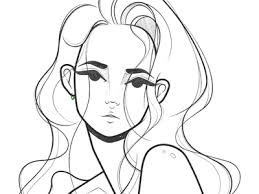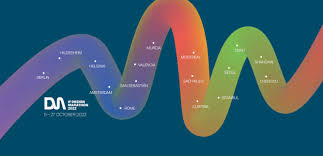Newspaper Design: A Blend of Tradition and Innovation
Newspapers have been a cornerstone of information dissemination for centuries, and their design plays a crucial role in capturing readers’ attention and conveying news effectively. The art of newspaper design is a delicate balance between honoring tradition and embracing modern trends.
Traditional Elements
Classic newspaper design elements such as columns, headlines, bylines, and photographs have stood the test of time. These traditional features provide structure and hierarchy to the content, guiding readers through the stories with ease. The use of serif fonts for body text and bold fonts for headlines adds to the readability and visual appeal of the newspaper.
Innovative Approaches
With the rise of digital media, newspapers have adapted by incorporating interactive elements, infographics, and multimedia content into their design. Dynamic layouts, vibrant colors, and creative typography are used to engage modern audiences and enhance the overall reading experience. Responsive web design has also made newspapers accessible across various devices, ensuring that readers can enjoy the content seamlessly.
The Role of Design in Journalism
Effective newspaper design goes beyond aesthetics; it serves a functional purpose in conveying information accurately and engaging readers emotionally. Thoughtful placement of images, pull quotes, and white space can draw attention to key stories and evoke a sense of curiosity. Visual storytelling through compelling graphics and illustrations can bring complex issues to life in a way that resonates with readers.
Challenges and Opportunities
While traditional print newspapers face challenges in an increasingly digital world, there are also opportunities for innovation in design. Experimenting with new formats, integrating social media feeds, and personalizing content based on reader preferences are just a few ways newspapers are evolving to stay relevant in today’s media landscape.
Conclusion
Newspaper design continues to evolve as technology advances and reader habits change. By blending traditional elements with innovative approaches, designers can create engaging layouts that capture the essence of storytelling while adapting to the demands of modern journalism.
8 Essential Tips for Creating an Eye-Catching Newspaper Design
- Use a clean and organized layout to improve readability.
- Incorporate engaging headlines and subheadings to grab attention.
- Balance text and images effectively for visual appeal.
- Utilize white space to prevent overcrowding on the page.
- Maintain consistency in fonts, colors, and styles for a cohesive look.
- Consider the hierarchy of information to guide readers through the content.
- Ensure proper alignment of elements for a polished appearance.
- Pay attention to detail, such as margins and spacing, for professional design.
Use a clean and organized layout to improve readability.
Employing a clean and organized layout is a fundamental tip in newspaper design that significantly enhances readability. By structuring content with clear sections, consistent typography, and ample white space, readers can navigate the newspaper effortlessly and focus on the information presented. A well-organized layout not only improves comprehension but also creates a visually appealing reading experience that encourages audience engagement and retention of key messages.
Incorporate engaging headlines and subheadings to grab attention.
Incorporating engaging headlines and subheadings is a crucial tip in newspaper design as it serves as the first point of contact with readers, enticing them to delve deeper into the content. Well-crafted headlines not only grab attention but also provide a glimpse of the story’s essence, making it easier for readers to decide whether they want to read further. Subheadings further aid in breaking down complex information and guiding readers through the article, enhancing readability and overall engagement. By focusing on creating compelling headlines and subheadings, newspaper designers can effectively draw in audiences and make a lasting impact with their content.
Balance text and images effectively for visual appeal.
In newspaper design, striking a harmonious balance between text and images is essential for creating visual appeal that captures readers’ attention. By carefully integrating text and images, designers can enhance the overall layout and storytelling experience. Thoughtful placement of visuals alongside relevant textual content not only breaks up the monotony of text-heavy pages but also helps convey information more effectively. The interplay between text and images adds depth and interest to the design, engaging readers and guiding them through the stories with visual cues. Mastering the art of balancing text and images is key to creating a visually compelling newspaper layout that resonates with audiences.
Utilize white space to prevent overcrowding on the page.
Utilizing white space in newspaper design is a crucial tip to prevent overcrowding on the page. By strategically incorporating empty spaces around text, images, and other elements, designers can create a sense of balance and clarity that enhances readability and visual appeal. White space allows content to breathe, guiding the reader’s eye smoothly through the page and highlighting key information effectively. Embracing white space not only prevents clutter but also adds elegance and sophistication to the overall design, making the newspaper more inviting and engaging for readers.
Maintain consistency in fonts, colors, and styles for a cohesive look.
To create a visually appealing and cohesive newspaper design, it is essential to maintain consistency in fonts, colors, and styles throughout the publication. By using a harmonious combination of fonts that complement each other, a consistent color palette that reflects the publication’s branding, and uniform styles for headlines, subheadings, and body text, designers can establish a strong visual identity that enhances readability and reinforces the overall aesthetic appeal of the newspaper. Consistency in these elements not only creates a sense of unity but also helps guide readers through the content seamlessly, making for a more engaging and enjoyable reading experience.
Consider the hierarchy of information to guide readers through the content.
When designing a newspaper layout, it is essential to consider the hierarchy of information to effectively guide readers through the content. By establishing a clear structure with prominent headlines, subheadings, and visual cues, designers can prioritize key stories and help readers navigate the newspaper seamlessly. This thoughtful arrangement of information not only enhances readability but also ensures that important news is highlighted and easily accessible, creating a more engaging and informative reading experience for the audience.
Ensure proper alignment of elements for a polished appearance.
Ensuring proper alignment of elements is a fundamental tip in newspaper design that contributes to a polished appearance. By aligning text, images, headlines, and other components with precision, designers create a sense of order and coherence on the page. Proper alignment not only enhances readability but also gives the layout a professional look that draws readers in and guides their eyes smoothly through the content. Consistent alignment of elements establishes a visual hierarchy and reinforces the overall structure of the newspaper design, resulting in a visually appealing and well-organized publication.
Pay attention to detail, such as margins and spacing, for professional design.
To achieve a professional newspaper design, it is crucial to pay meticulous attention to detail, including elements like margins and spacing. Properly set margins ensure that content is neatly framed and easy to read, while appropriate spacing between columns and text blocks enhances readability and visual appeal. Consistent attention to these finer points of design not only elevates the overall aesthetic but also contributes to a polished and professional presentation that engages readers effectively.




